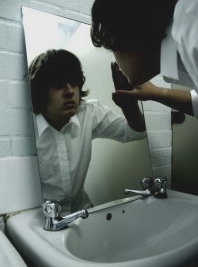 Your teen is still having difficulty reading, and he still can’t seem to write that essay. He’s falling further behind than ever before. You can see that your child is struggling, yet you’re unsure how you could help him, and what exactly is the matter. “He’s smart!” you tell yourself. And he is, but for some reason, his academic achievements aren’t reflecting his intellect.
Your teen is still having difficulty reading, and he still can’t seem to write that essay. He’s falling further behind than ever before. You can see that your child is struggling, yet you’re unsure how you could help him, and what exactly is the matter. “He’s smart!” you tell yourself. And he is, but for some reason, his academic achievements aren’t reflecting his intellect.
“He may have a learning disability,” his teacher suggested. But how can you be certain that he isn’t simply being, well, a teenager, and simply slacking off? Too many of these “symptoms” just seem normal.
In order to help your child, it’s useful to know exactly what kind of learning disabilities there are and what signs to look for.
Types of Learning Disabilities
- Dylexia. Dylexia is difficulty processing language. Reading is particularly difficult for those with this learning disability. He may be a bad speller, or dislike reading all together. Words may seem backwards to your child.
- Dycalculia. Dycalculia is difficulty processing math problems. But it’s not only calculating math in the class room, but individuals with this learning disability have trouble with comprehending time and money.
- Dysgraphia. Dysgraphia is trouble organizing ideas. This makes writing essays especially difficult.
- Dyspraxia. Dyspoxia is trouble with motor skills. Though you may think a teen would have out-grown dysproxia, it can carry into adolescence. These teens could have bad handwriting, have poor coordination, or have a hard time driving.
Signs That Your Teen May Have a Learning Disability
To aid parents determine their teen’s needs, the National Center for Learning Disabilities has put together a checklist of warning signs . But even if your teen has a few of these signs, this does not mean that he has a learning disability. Instead, look for significant patterns.
Some teens may have difficulty with changing schedules, making friends, or even remembering names. They may have trouble with organization, or may be distracted. They might not be able to make decisions easily, or may be poor at sports. It’s a variety of different characteristics that could be in any normal teenager. Watch for patterns.
What You Can Do About It
Once you have filled out the checklist , or have noticed any consistent signs, it is time to take action. Request a formal evaluation.
After the diagnosis has been made, the first question is whether or not to tell your child. This is a personal choice. Do whatever you feel is best for your adolescent. But if you make him aware of his learning disability, be sure to tell him that this does not mean he is “dumb” or “stupid.” (You already know how smart he is.) Learning disabilities have nothing to do with intelligence.
You may want to talk to the school and make them aware of your child’s situation, and see what programs or resources are available for your child. (This is what the evaluation is for. It makes it possible for your child to receive services.) There are private schools that provide the right environment and teaching methods for students with learning disabilities.
Conclusion
If you pay attention and follow the patterns, you will be able to help your child succeed. Learning disabilities are obstacles, not absolutes. Why couldn’t your child take on the world? Help your child on his way—find him the right services.
About The Author
A blogger for medical-related sites, Jennifer Mathis aims to educate people more about teens with special needs, and private schools with facilities for students with learning disabilities such as Discovery Academy. Through this article, she hopes to help parents know more about learning disabilities and what they can do for their teens.
